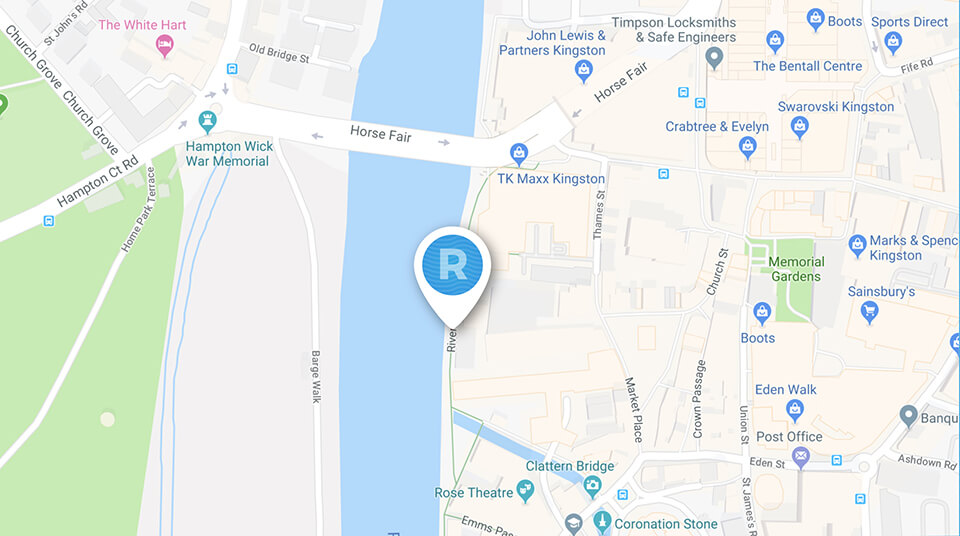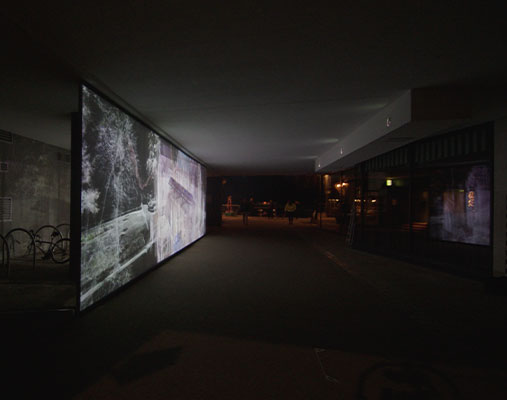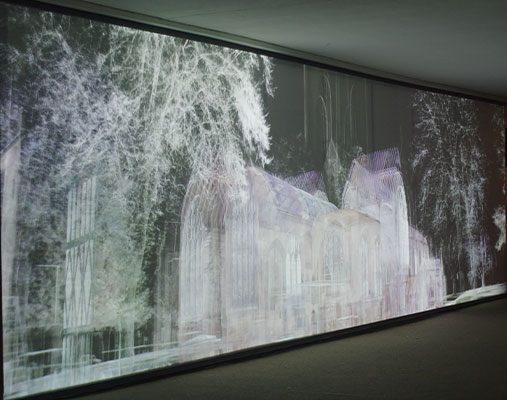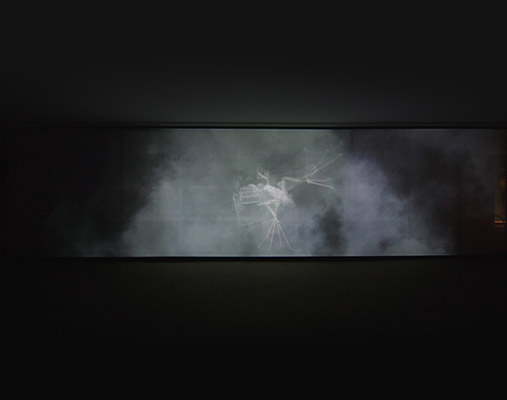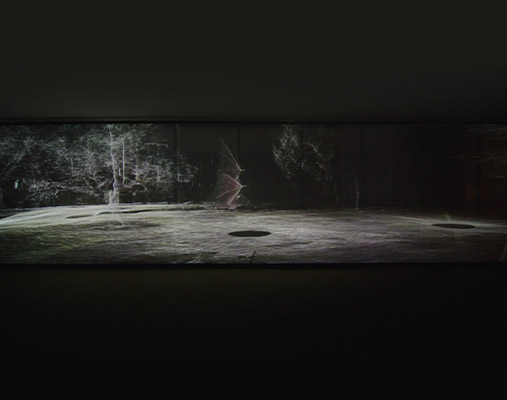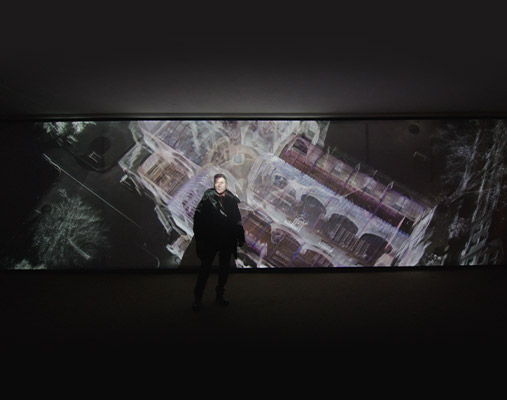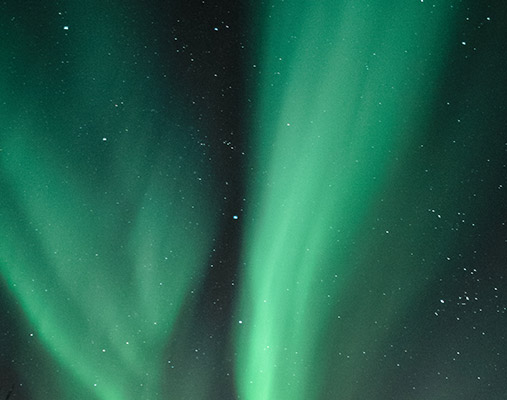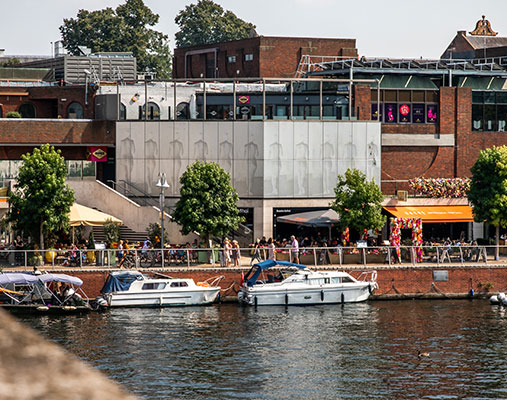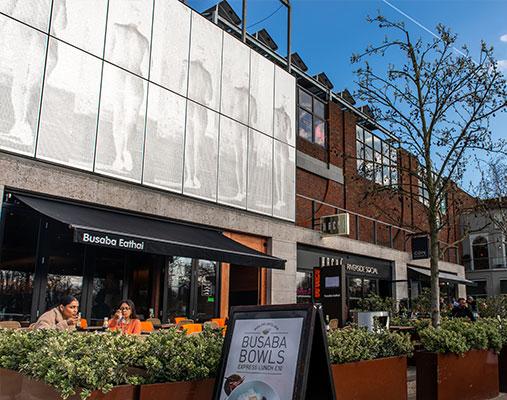Artwork at Riverside
Echolocation
Launching on 14th April, acclaimed British artist Mat Collishaw’s first permanent outdoor public art installation in the UK showcases more than a millennium of local history on Kingston’s riverside.
The specially commissioned work is a new outdoor projection consisting of an eleven- metre-long, three-channel video installation which will be on view at the Undercroft, a long alleyway that runs between the river Thames and All Saints Church. Echolocation references the church’s long heritage, bats and Kingston’s prodigal son, Eadweard Muybridge.
Best experienced at dusk, Echolocation reveals the hidden history of this once sacred ground. Created in collaboration with Kingston University the installation was commissioned by Canadian and Riverside Estates Ltd, owners of Riverside Walk.
Northern Lights
Crowned in AD 925 on the king’s stone, after which Kingston upon Thames is named, Aethelstan was the first Anglo-Saxon monarch of a unified England, an achievement he realised the following year when he conquered Northumbria.
It was a victory portended, according to The Anglo-Saxon Chronicle, the approximately contemporaneous historical record of the period, by the appearance of “fiery lights in the northern part of the firmament”, a phenomenon described earlier in those annals as “immense sheets of light, rushing through the air, and whirlwinds, and fiery dragons flying in the sky”. In other words, the northern lights.
As wonders of the natural world go, they are awe-inspiring. But they are also rare. Even during the geomagnetic storms that cause them, they are visible only when there is no cloud cover, most frequently between latitudes of 60° and 72°, which is well inside the Arctic Circle.
In Kingston (latitude 51.4123°) this spring, however, the sight of them – or at least a virtual version – is guaranteed, thanks to a temporary three-channel video installation on the roof of Riverside Walk, projected on to a semi-transparent fine mesh made from stretched fishing net. (Kingston’s coat of arm consists of three silver salmon on a blue ground, representing three fisheries that are mentioned in the Domesday Book, after which the town became known as Kyngeston super Tamisiam, from the Latin for sieve or filter.
Also known as the aurora borealis after the Roman goddess of the dawn (Aurora, sister of the sun, Helios, and the moon) and the Greek god of the north wind (Boreas), this otherworldly phenomenon is created by a solar wind of charged gas particles that glow when they come into contact with the Earth’s magnetic field. The colours are caused by the reaction of different gases: oxygen produces a green or, occasionally, red light and nitrogen a blue one.
As to what they presage, it depends on whose mythology you subscribe to. The ancient Chinese saw them as good and evil dragons locked eternally in conflict. While several Native American tribes regarded them as the spirits of the deceased trying to communicate with those on Earth. But the Romans saw hope, associating them with new beginnings and the dawn of another day.
Written by Claire Wrathall
Plate 23: Female Nude (walking), right hand at chin, with shoes on.
Best known for his experimental moving-image photography and motion-picture projection, Eadweard Muybridge was born in Kingston upon Thames in 1830 and lived a life as sensational as the moving-picture industry his pioneering work prefigured.
He took up photography in Kingston in the 1860s, having emigrated to the United States a decade earlier but returned to recuperate from a serious head injury sustained in a stagecoach crash in Texas. Once back in the US, however, it was this trauma that enabled his acquittal after he shot point blank and killed his wife’s lover. (She sued for divorce on grounds of extreme cruelty.)
His defence was paid for by the railroad magnate Leland Stanford, a former governor of California and later senator, whom Muybridge had met in San Francisco, where he had established his studio.
Stanford, who owned a string of racehorses, had had a bet that when a horse gallops all four of its hooves leave the ground simultaneously; he reckoned Muybridge was the man to settle it. Hence his series of “automatic electro-photographs” The Horse in Motion, taken in 1877, which proved conclusively that it is briefly airborne.
In 1883, a commission from the University of Pennsylvania enabled Muybridge to continue his investigations into “consecutive phases of animal movement”, resulting Animal Locomotion, the ostensibly scientific study from which these images have been reproduced on perforated aluminium panels facing Riverside Walk.
The majority of the 781 collotype plates in the portfolio show women “from all classes of society”, sometimes clothed, mostly not (only unmarried women were photographed naked) and engaged in a variety of activities from, as here, walking in high heels to playing tennis, climbing into a hammock, curtseying, putting on stockings and “other actions incidental to everyday life, which illustrate motion and the play of muscles”.
Muybridge eventually retired to Kingston in 1894, where he died a decade later, having bequeathed a collection of photographic equipment, lantern slides and prints to Kingston Museum.
Written by Claire Wrathall
Sign up for our Latest Offers
Be the first to receive information on events and special offers!
